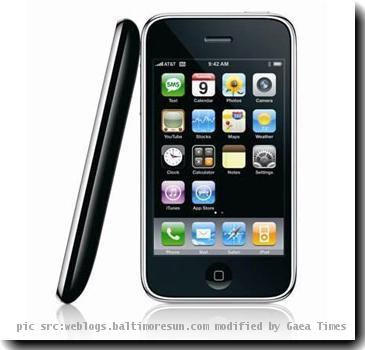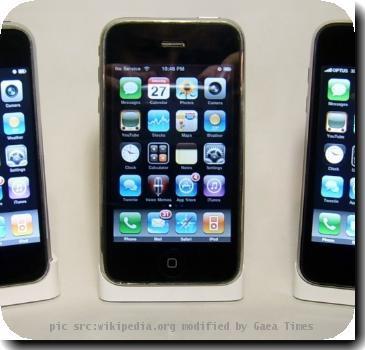Review: Palm adds features to new Pre, Pixi smart phones, Pre benefits most from changes
By Rachel Metz, APWednesday, February 3, 2010
Review: Palm touches up Pre, Pixi smart phones
SAN FRANCISCO — Palm tried to reinvent itself with the release of the stylish Pre and Pixi smart phones last year. Now, it’s hoping to woo more consumers with updated versions of the handsets, the Pre and Pixi Plus.
Both phones remain sleek and sport Palm’s easy-to-use, attractive WebOS software. Both also get a nifty new feature — the ability to act as a mobile Wi-Fi hotspot for up to five devices. And both switch from Sprint Nextel Corp.’s wireless network to the one from Verizon Wireless, which costs smart phone customers more each month but has better coverage.
It’s really the Pre that benefits from the changes, though, while the cute-but-annoyingly slow Pixi continues to lag behind.
With the Pre Plus, the first thing I noticed was the absence of a white button near the bottom of its shiny black face. That button had been helpful for expanding open applications or viewing them like an array of small playing cards across the screen.
Instead of the button, which the Pixi never had, you now have a glowing, touch-sensitive white dash that makes the phone’s face more like an uninterrupted slate — all the better for swiping your fingers to open the main menu or switch from one application to the next.
The keyboard on the Pre also felt smoother and less sticky than the previous version, which made it easier to type instant messages and e-mails.
The coolest feature on both phones, however, is a mobile hotspot utility you can download from Palm’s App Catalog. It lets up to five devices connect to Verizon’s wireless network through the phone, acting as a Wi-Fi hotspot.
Once installed, the application was super easy to use. I just slid a little on-screen toggle to “on,” set a password for devices to connect to my network and started connecting gadgets. In a few minutes, I was watching Hulu clips on my laptop and browsing news Web sites on another smart phone. I could also use the Palm phone at the same time.
Generally, this worked well with Web surfing, but sometimes my devices seemed kind of pokey: Downloading a song onto an iPhone that was connected wirelessly to the Pre Plus seemed to take much longer than it should, for example.
Not surprisingly, the sweet Wi-Fi hotspot feature will cost you. Verizon charges $40 per month for it, and this is on top of the voice, data and texting tab you’ll rack up each month for using the smart phone on its network. Still, it could be worth it if you want to be able to connect a bunch of gadgets to the Web while on the go.
I was also jazzed to get double the storage on the new Pre, for a total of 16 gigabytes, as I tend to take lots of photos and rarely erase them or move them to a computer or external hard drive. I would still love a slot for a memory card, though, so I could have the option of storing more, and larger, files such as movies on the phone.
The Pre Plus also seemed a bit zippier than the previous Pre, which makes sense as Palm doubled the amount of RAM on the phone (though it won’t say how much it had then or now).
Overall, the Pre Plus packs a number of new features and is a little easier to use than the first one — just what you’d expect from an updated device.
Sadly, the Pixi Plus wasn’t as lucky.
Despite a few nifty changes such as the aforementioned Wi-Fi hotspot capability, as well as the ability to connect the phone through a Wi-Fi hotspot at a coffee shop, the Pixi Plus is as irritatingly slow as the original Pixi Palm released in November. The phone took about 15 to 20 seconds longer than the new Pre to load the same YouTube video, and it would sometimes stop to buffer the clip while the Pre didn’t even stutter.
Typing updates to my Twitter feed through the free TweeFree Twitter client was fine, but the Pixi Plus was sluggish when I tried to use the same application to post a photo. And Web pages loaded more slowly than they did on the Pre Plus.
It also seemed to take a long time for the phone’s accelerometer sensor to recognize that I had turned the phone sideways, and the device got tripped up when I scrolled through lists, such as the offerings in Palm’s App Catalog.
The Pixi Plus, available for $100 after a rebate and with a two-year service contract, may appeal to some users looking for their first smart phone, but for another $50 — $150 — the Pre is a lot more fun to use.
Regardless of which handset you have or covet, more features are coming soon: Palm plans to roll out a software update for both the new and old Pres and Pixis this month that will enable video recording and sharing, video and photo editing. It will also include a way for the phones to play Flash videos on Web sites like Hulu, a feature missing from Apple Inc.’s iPhone and upcoming iPad.
It may not be starting a smart phone revolution, but the updated handsets and upcoming changes show Palm is definitely stepping up its game.
Got a technology question? Send an e-mail to gadgetgurus(at)ap.org.
Tags: Communication Technology, Consumer Electronics, Geography, Hulu, Ipad, Mobile Communications, North America, San Francisco, United States, Wireless Networking, Wireless Technology, Youtube

